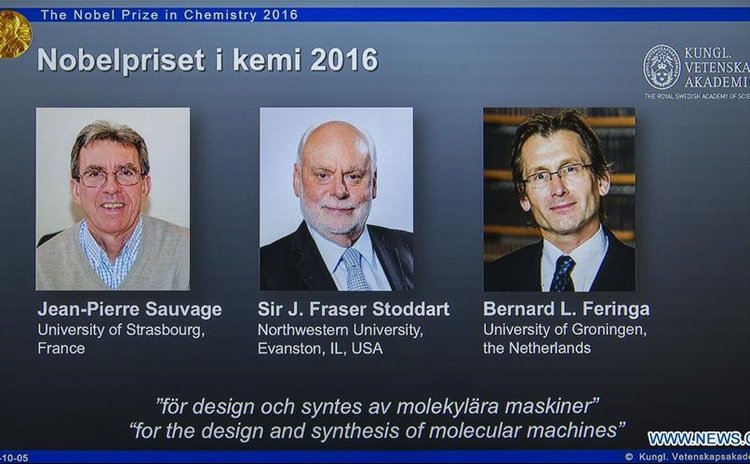Three scientists share 2016 Nobel Prize in chemistry

STOCKHOLM, Oct. 5 (Xinhua) -- Three scientists shared the 2016 Nobel Prize in chemistry, the Royal Swedish Academy of Sciences announced Wednesday.
The prize was awarded to Jean-Pierre Sauvage, Sir J. Fraser Stoddart and Bernard L. Feringa "for the design and synthesis of molecular machines."
In a telephone interview, Feringa said he was "shocked, so honored, and so emotional" at the news. He emphasized that "all credit should be given to my co-workers for their fantastic work."
Talking about application potential of their designs, he said "once you can control the movement at a molecular level, you can think of all kinds of movements."
In an official statement, the Royal Swedish Academy of Sciences said: "2016's Nobel Laureates in Chemistry have taken molecular systems out of equilibrium's stalemate and into energy-filled states in which their movements can be controlled. In terms of development, the molecular motor is at the same stage as the electric motor was in the 1830s, when scientists displayed various spinning cranks and wheels, unaware that they would lead to electric trains, washing machines, fans and food processors.".
"Molecular machines will most likely be used in the development of things such as new materials, sensors and energy storage systems," it added.
Sauvage is currently professor emeritus at the University of Strasbourg and director of research emeritus at the National Center for Scientific Research, France. Stoddart is board of trustees professor of Chemistry at Northwestern University. Feringa is professor in Organic Chemistry at the University of Groningen, the Netherlands.
This year's prize amount is 8 million Swedish krona (930,000 U.S. dollars), to be shared equally between the laureates




